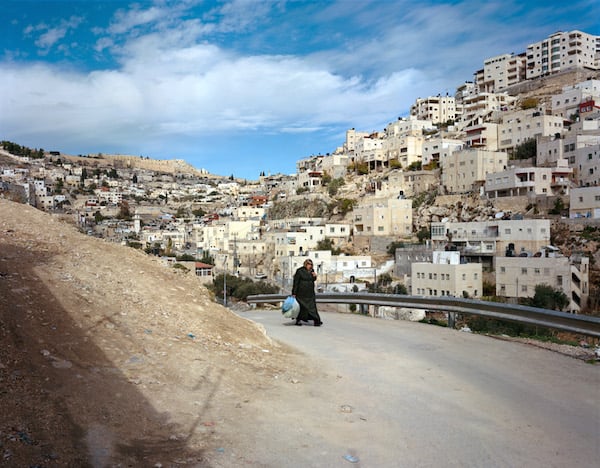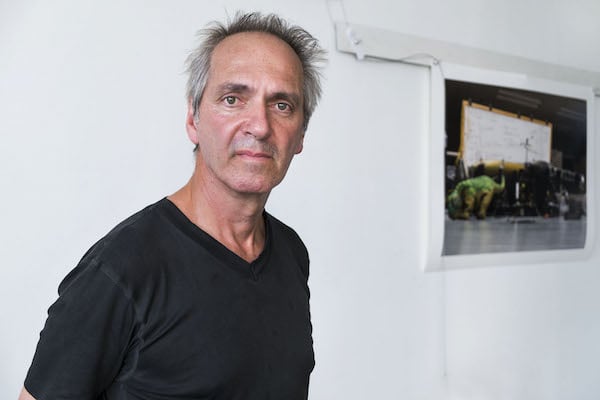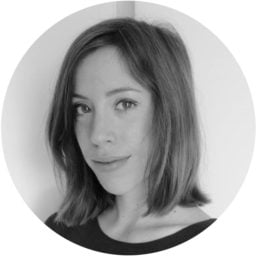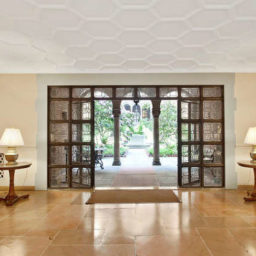Photography lovers rejoice: the German artist Thomas Struth is returning to London with a phenomenal exhibition at Marian Goodman Gallery, his first solo outing in the city since his 2011 retrospective at Whitechapel Gallery.
The show gathers two bodies of work: a series taken in Israel and Palestine, and a number of photographs shot in scientific and technological research centers in California.
But it’s the images from Israel and Palestine—originally taken for the project This Place during a series of trips between 2009 and 2014—that really make an impact.
Encompassing a series of tropes that underpin Struth’s entire oeuvre—landscapes, family portraits, landmark architecture—this new series takes Struth’s unique gaze a step further, creating painstakingly composed images that are calm, empty, and beautiful, yet loaded with the ghosts of conflict, personal drama, and war.
artnet News met with the acclaimed photographer (see artnet News’ Top 10 Most Expensive Living German Artists) to talk about his powerful work from the Middle East, the status of analog photography in a digital world, and what drives him to keep making work.
The Israel and Palestine series is your first work in a conflict zone. Has it changed your understanding of your role as a photographer?
I have often wondered whether I should lend my abilities to journalistic or humanitarian causes, aside from making, exhibiting, and selling art. But I have also asked myself whether I could make better or more effective pictures in that context than the ones I make, and the conclusion is that it’s not the right thing for me to do.
My series in Israel and Palestine came as a result of an invitation from Frédéric Brenner to do a project [This Place] about Israel and the West Bank with a group of fellow photographers. I had been invited to Israel on a few occasions before but I never went, because I was afraid. Also, I am German, and Germany has a very fraught history with Jews and Israel. But on this occasion it felt like the right circumstances. Brenner has huge experience in the area and with Jewish communities, and I thought, this is the moment.
But I wanted to photograph both Israel and the Palestinian territories.
Did your travels and work in the area change any preconceptions that you might have had on the Israel-Palestine conflict?
Yes, going there actually did change my opinion. Of course, we all have an opinion about the conflict, mostly formed by the media. But I think that having contact with the reality there makes you a little bit more entitled to have an opinion.
Overall, I am very happy I went. Also, it has made me find a bit of peace with my German-ness in relation to the Jewish. The previous generation found it really hard to apologize for what our ancestors did. So it’s good to be able to be more open and honest, even if I think some of the Israeli policies are unjust—just like I think some Palestinian policies are unjust.
Undoubtedly, the area has a very sad dynamic. But you also find a lot of happiness and joy in many moments.

Thomas Struth, Silwan, East Jerusalem (2009)
Photo: Courtesy Marian Goodman Gallery
You work with a large format analog camera. What’s your opinion on the prominence of digital photography and its pervasive role in social media?
I’ve been thinking a lot about that, observing what’s happening around me and what does it entail. Indeed, social media photography is a cultural phenomenon. I think the reason for its prominence is that we live in an era of vanity, where we feel less politically empowered as citizens, so we are turning inwards, retreating into ourselves.
But that private inwardness then becomes public, through social media, so secrets have devalued. I’ve read a very interesting book by Yvonne Hofstetter [an expert in Artificial Intelligence] where she talks about how having secrets is key for democracy, because only when you are able to develop something as a small group in a protected space, you can then make a long term plan, which is something that seems to be lacking in contemporary politics.
Your photographs are monumental and sublime, not only in terms of scale, but in how space is portrayed and loaded with tension. What is your relationship with the tradition of German landscape painting?
I started as a painter, and then I began to make photographs, which made my painting get more and more realistic, but I didn’t like photorealism. It just didn’t make sense, so I focused on photography.
One of the things that struck me about this show is how carefully it’s been installed and distributed in the exhibition space.
Coming from a conceptual background and having photographed museums for years, exhibition design is something I enjoy enormously. I am a perfectionist, but not because I love perfection, but because every detail creates and transmits content. I often think of exhibitions as music pieces: you have themes, variations, and contrasts. There has to be moments for quietness and dynamism distributed in the exhibition space.
What makes you continue wanting to make art?
I think I continue taking photographs because that’s the thing I do best. I love music, but I am not a great musician. I love painting but I am not such a great painter. But I can “see” very well.
Thomas Struth’s solo exhibition is currently on view at Marian Goodman Gallery, 5-8 Lower John Street, London, from April 30-June 6.









